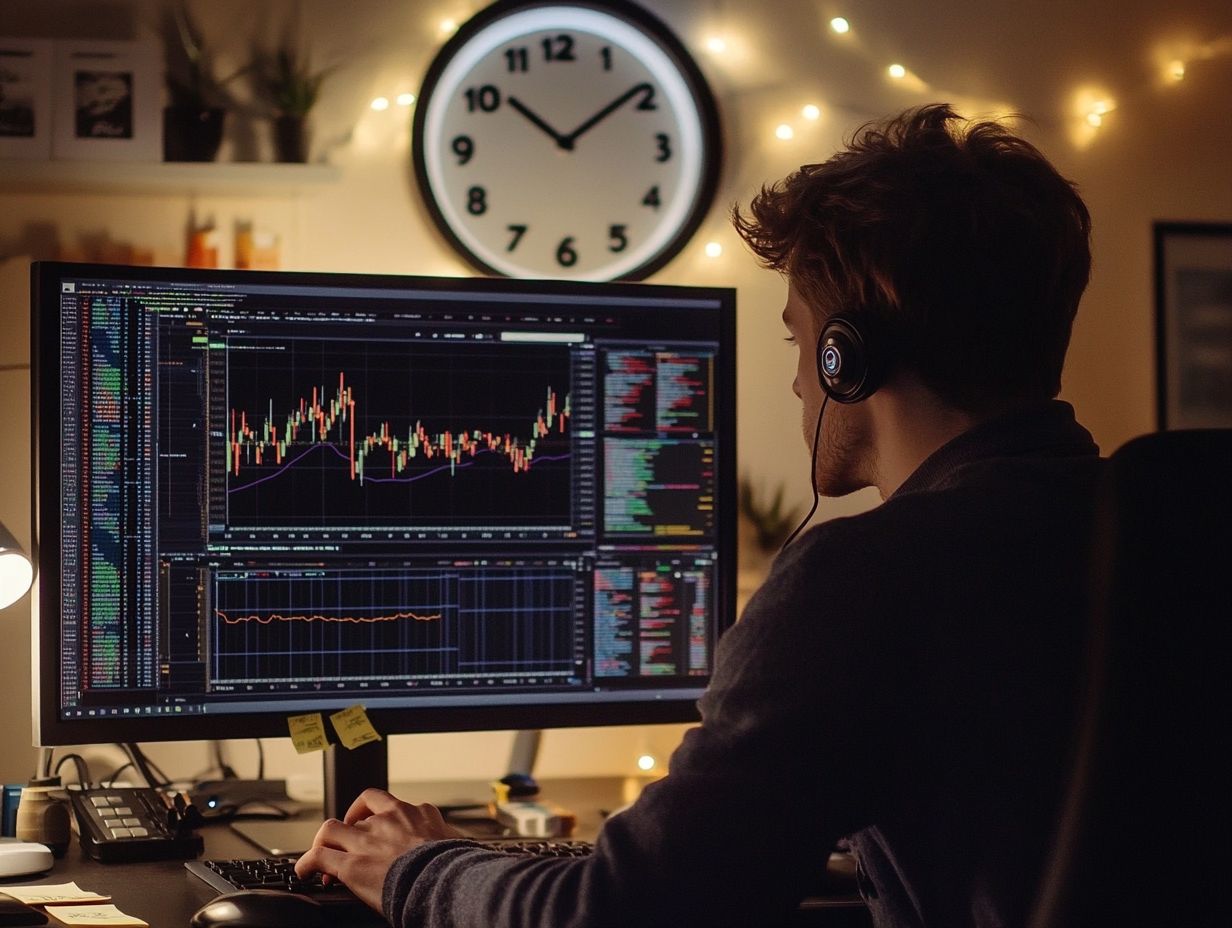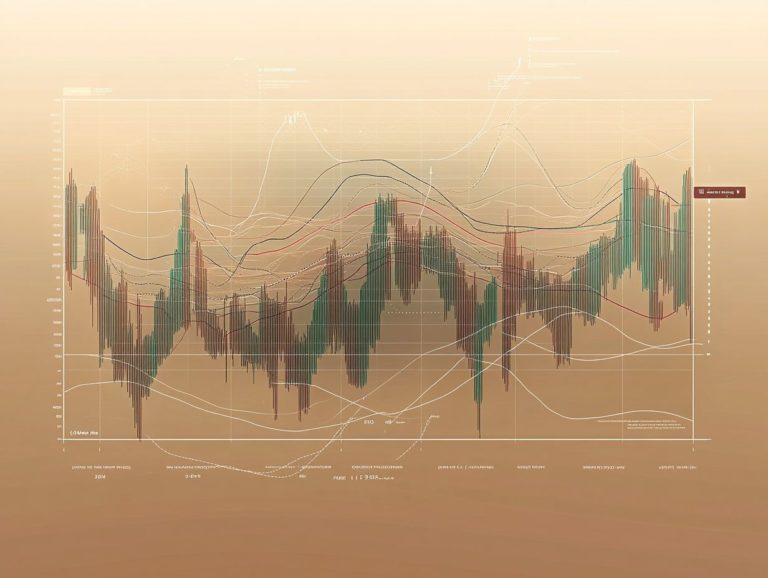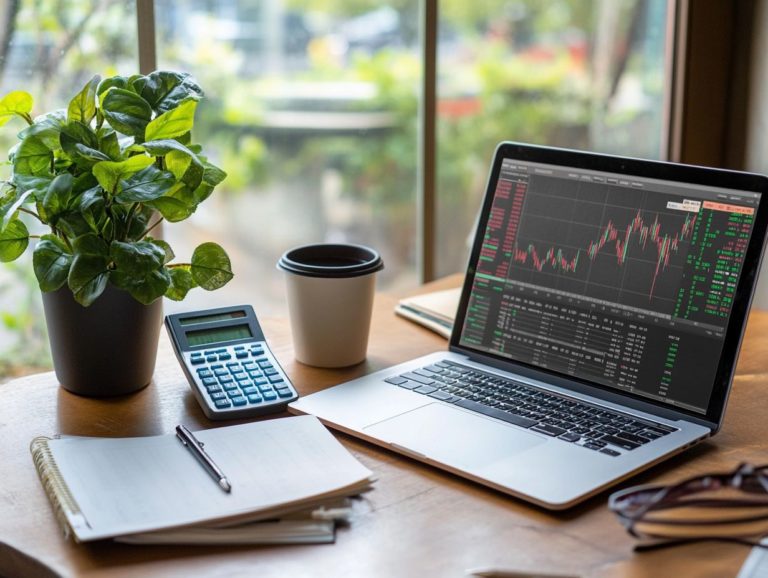The Importance of Timeframes in Trading
In the fast-paced world of trading, grasping the nuances of timeframes is essential for your success. Choosing the right timeframe can dramatically boost your trading success!
Whether you’re a day trader aiming for quick gains or a long-term investor focused on steady growth, the timeframe you select can profoundly influence your strategy and outcomes. This article delves into the significance of timeframes, highlighting the distinctions between short-term and long-term trading.
You’ll discover key factors to weigh when choosing the right approach to achieve your goals. Effective strategies tailored to various timeframes will be presented, alongside common pitfalls to steer clear of, empowering you to navigate the trading landscape with utmost confidence.
Contents
Key Takeaways:

- Timeframes in trading refer to the duration of a trade and are crucial for achieving success in the market.
- Short-term trading allows for quick profit potential, while long-term trading offers stability and potential for higher returns.
- When choosing a timeframe, consider your goals, risk tolerance, and current market conditions to make an informed decision.
Understanding Timeframes in Trading
Understanding timeframes in trading is vital for your success as a trader. They significantly impact your decision-making across diverse market conditions, especially in forex trading.
Each timeframe offers valuable insights into short-term trends, long-term strategies, and the broader market dynamics influencing price movements in currency pairs. By analyzing these timeframes, you can pinpoint significant price patterns and evaluate volatility.
This helps you make informed trading decisions that align with your investment strategy, whether you re a day trader, swing trader, or a long-term investor.
What are Timeframes and Why are They Important?
Timeframes in trading are the specific intervals at which you analyze price movements and make crucial trading decisions. These intervals can vary significantly from just a few seconds, as seen in scalping techniques, where you make many quick trades to take advantage of small price movements, to weeks or even months, often favored by long-term investors.
Grasping the importance of different timeframes is essential. They enable you to assess market trends more effectively and pinpoint optimal entry and exit points.
Opting for short-term timeframes allows you to seize quick price fluctuations, while long-term timeframes help you identify broader market trends. The choice between these strategies carries significant implications for your risk management and overall profitability.
Ultimately, your selection of timeframe will shape your trading approach, aligning it with your financial goals and risk tolerance.
Short-Term vs. Long-Term Trading
Short-term trading and long-term trading are two distinct approaches within the realm of forex trading. Each comes with its own set of strategies, risks, and potential rewards. Understanding these can help you align your trading style with your personality and market conditions.
Differences and Benefits of Each Approach

The key differences between short-term trading and long-term trading revolve around their time horizons, risk management strategies, and profit potential.
Short-term trading, often embodied by day traders, typically involves holding positions for mere minutes to hours. This approach allows you to capitalize on quick price fluctuations and market momentum. These traders often use market charts to make decisions, which comes with the trade-off of heightened volatility and the need for swift decision-making.
On the other hand, long-term trading invites you to adopt a more patient mindset. Positions are held for months or even years, enabling you to take advantage of broader market trends and fundamental shifts. This strategy often results in less stress and lower transaction costs due to fewer trades, appealing to those who favor a more stable investing style.
Each method offers unique advantages tailored to different trader profiles. Understanding your own risk tolerance and market goals is crucial for success.
Now that you understand the importance of timeframes, start experimenting with different strategies today to enhance your trading success!
Factors to Consider When Choosing a Timeframe
Choosing the right timeframe for trading is essential. Carefully weigh several factors including your personal goals, risk tolerance, trading style, and the current market conditions.
Considering these elements will significantly enhance your trading strategy and outcomes.
Personal Goals, Risk Tolerance, and Market Conditions
Your personal goals and risk tolerance shape the timeframe you should adopt as a trader.
These factors influence how you navigate market conditions and liquidity, which refers to how easily you can buy or sell assets.
They aren’t just theoretical; they have a tangible impact on your decisions regarding financial security and profit potential. If you’re focused on short-term gains, a day trading strategy might be your best bet. Conversely, if you aim for long-term financial stability, you may prefer a position trading approach.
Market conditions, including volatility and liquidity fluctuations, significantly affect how you manage risk. During turbulent times, even traders with aggressive profit targets need to reassess their risk tolerance and adjust their trading styles as necessary to stay aligned with their broader financial goals.
Strategies for Different Timeframes
To develop effective strategies for various timeframes, you need a deep understanding of technical analysis. Recognizing the trading opportunities that emerge from shifting market dynamics allows you to tailor your approach with precision and foresight.
Applying Different Techniques to Different Timeframes

Applying different trading techniques based on your chosen timeframe allows you to capitalize on the unique price patterns and volatility characteristics in the forex market.
Aligning your strategies with specific durations whether you’re scalping in mere seconds or swing trading over several days enables you to better harness market dynamics. For instance, using candlestick charts and oscillators is particularly effective for short-term trades. In contrast, longer-term traders may find value in moving averages and trend lines.
Understanding the nuances of each timeframe is crucial. As a short-term trader, remain alert to rapid price movements and shifting market sentiment. Those focusing on longer periods can explore broader economic indicators and trends.
This tailored approach enhances the accuracy of your trading signals and deepens your understanding of the forces driving price changes.
Common Mistakes to Avoid
Identifying and steering clear of common pitfalls in timeframe selection and execution is crucial for your success in trading. This can help substantially mitigate risks in the ever-fluctuating forex market.
How to Avoid Pitfalls in Timeframe Selection and Execution
Stay vigilant about trading risks and continuously refine your strategies based on real-time market conditions.
This vigilance is essential because the forex market is notoriously volatile and can shift quickly. Successful traders emphasize maintaining discipline through a well-defined trading plan, which acts as your roadmap during unpredictable moments. Set your entry and exit points clearly and be prepared to adapt your strategies to match changing market dynamics.
Effective risk management is crucial. Employing stop-loss orders and appropriate position sizing are key strategies to mitigate potential losses. Experienced traders understand that cultivating an adaptable mindset prepares you for market surprises and strengthens your decision-making process, keeping emotions in check.
Frequently Asked Questions
Have questions? Let s clear them up in our FAQ!
Ready to take your trading to the next level? Start applying these strategies today!
What is the importance of timeframes in trading?

Timeframes refer to the specific period that traders analyze to make decisions. They provide a structured approach to trading, enhancing market analysis.
How do timeframes affect trading decisions?
Different timeframes provide unique perspectives on the market. Shorter timeframes suit day traders, while longer ones are ideal for long-term investors.
What are the most commonly used timeframes in trading?
The most common timeframes include intraday (1-minute, 5-minute, 15-minute), daily, weekly, and monthly. Traders often customize these based on their strategy.
Why is it important to have multiple timeframes in trading?
Having multiple timeframes gives traders a broader view of the market. This helps in confirming signals and avoiding impulsive trades.
How can traders use timeframes to manage risk?
Longer timeframes help traders understand overall trends. This knowledge guides effective stop-loss orders and risk management.
Can timeframes be used in any type of trading?
Absolutely! Timeframes work across stocks, forex, commodities, and cryptocurrencies. Adjust them based on the market’s volatility and liquidity.






